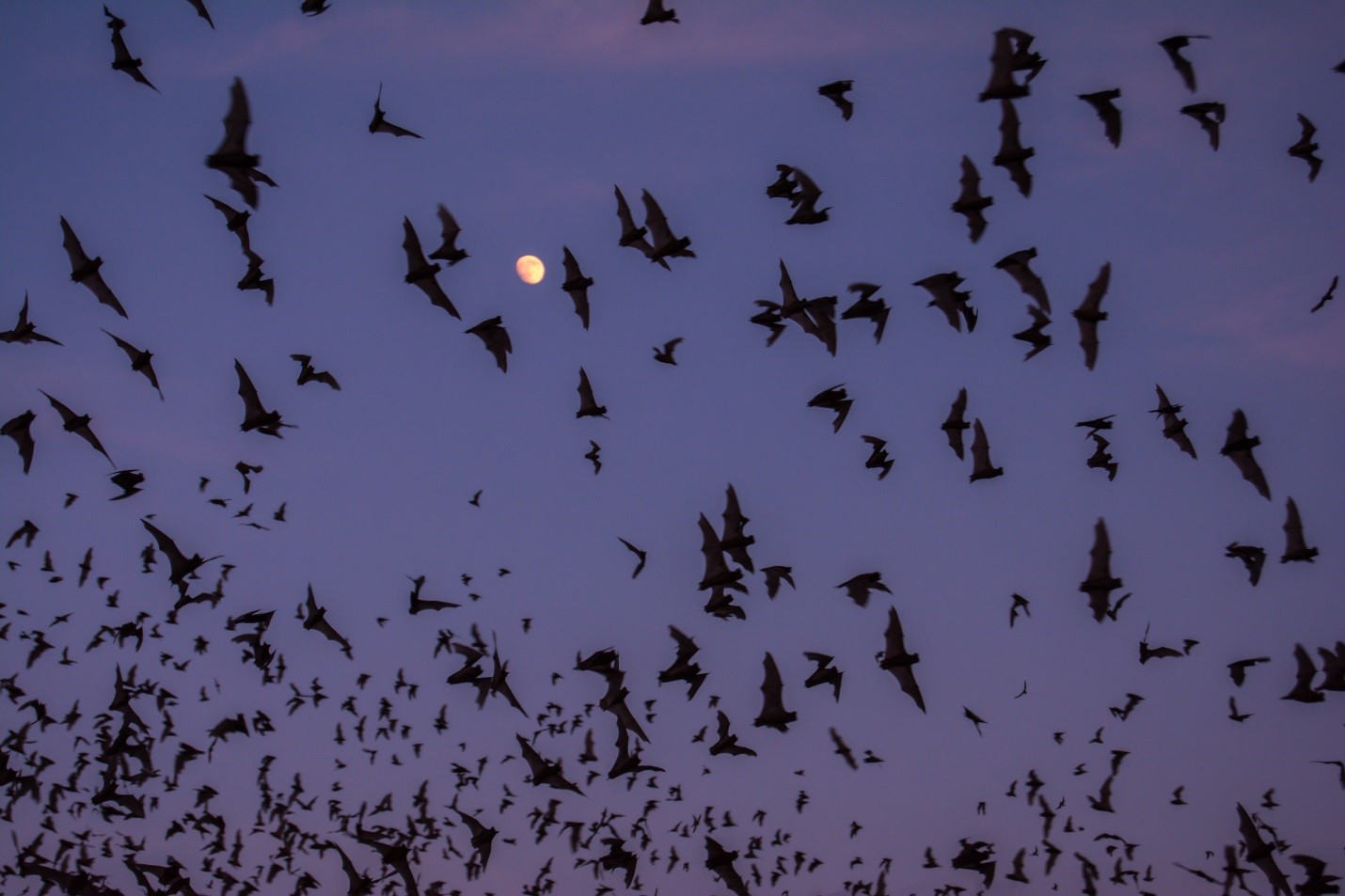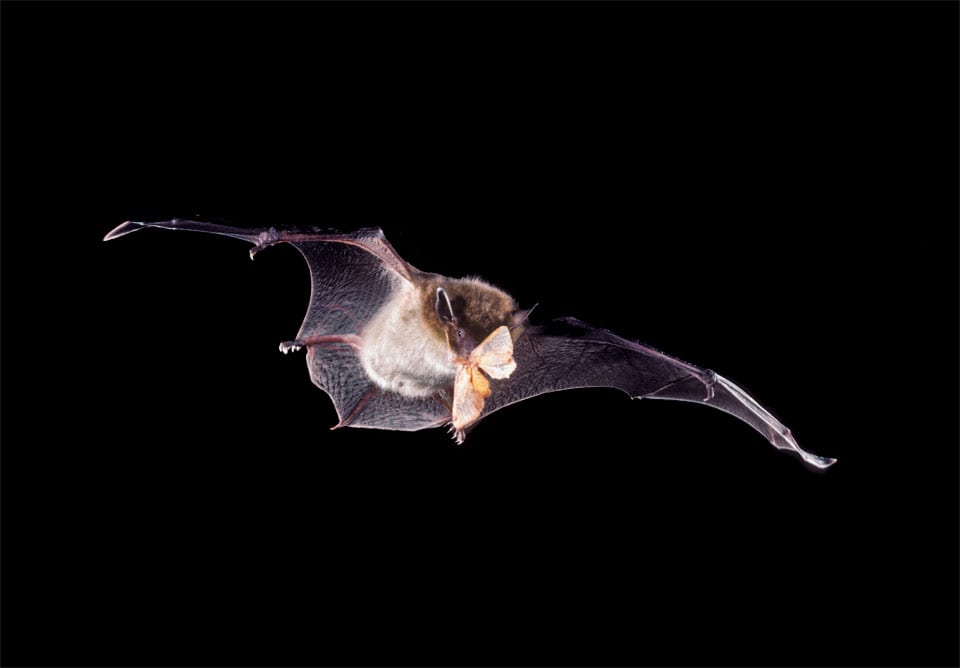
Hundreds of free-tailed bats in the night sky. Image courtesy of Canadian Wildlife Federation.
Halloween! Vampires! Evil animal! Is this your first impression of bats? Bats have long had a bad reputation, they are prejudiced in the Media as bats are suspected of being a host for some virus, causing most people to associate them with creepy things and believe bats would fly around vampires. Bats are most active at night, making them linked with darkness and giving people a sense of fear, Stanford University scholar Adrienne Mayor told National Geographic. However, this is not the way things are, bats are misunderstood, and thousands of bats have been hunted and persecuted by people due to fear and ignorance. Bats are actually really cute and cool animals that are vital to agroecosystems. Bats contribute to agroecosystems which pollinate plants, spread seeds, and feed insects that threaten agricultural fields. The loss of bats in North America potentially leads to US$3.7 billion in annual agricultural losses in a particular crop field, a study published in ‘Science’. Now is the time to get to know bats without prejudice while realizing the beneficial and positive influence of bats on agroecosystems and society.
Bats as Pollinator
When asked about the pollination of plants and flowers, bees are probably the first animal that comes to mind for most people. However, bats also play a critical and irreplaceable role as pollinators. Pollination is a process that transfers pollen from the male parts of a flower to the female parts while it requires help from other species. Based on the ability to fly and energy-rich diet, approximately 500 flowering plant species are pollinated by bats worldwide. Long-nosed bats (Leptonycteris nivalis) are fruit bats that take and disperse the pollen when they collect and feed on the nectar of figs and food crops. Bats generally fly farther than insects and bees, especially leaf-nosed bats, can fly up to 18 km between plants. Bats are also primary pollinators of columnar cacti, and they contribute to about 65% of the pollination of columnar cacti. More interesting is that cacti have evolved to specific sizes and shapes to adapt bat pollinators. Bats tend to help pollination in more interesting ways than we generally think! Unfortunately, bat species native to British Columbia are insectivores and cannot contribute to plant pollination.

Long-nosed bats are plucking pollen from figs. Image courtesy of Bat Conservation International.
Bats as Seed Disperser
Regeneration of forest and ecosystem occurs as seeds spread into the fragmented and degraded areas, and now you must be wondering how the seeds are spread to degraded areas. The answer is fruit bats! Fruit bats, as seed dispersers, serve an essential ecological function in the tropical forest. Based on the diets and foraging habits of fruit bats, they disperse more seeds per species than birds, improving the speed of regeneration of forest and crop fields. Fruit bats generally feed on fruits, and they digest the pulp and defecate the seeds while flying. Droppings of fruit bats contain fruit seeds, which can be dispersed hundreds of kilometers and decomposed as soil fertility. Recent research on African fruit bats found that 150,000 African fruit bats can carry and disperse ‘more than 300,000 seeds in a single night’, benefiting about 700,000 Euro due to increasing soil fertility. With the seed dispersal of bats, the ecological and economic importance of bats cannot be overlooked.
Bats as Pest Controller
Mosquitoes must have plagued you in the hot summer. Surprisingly, most bats are insectivores which can help you solve this annoyance. The flight ability, nocturnal lifestyle, and diet cause bats to become effective predators of pest insects, controlling the population of pest insects in agroecosystems. A single bat could consume hundreds of insects every night, and a colony of bats eats 140 to 147 tons of insects per night during the growing season. This makes an enormous reduction in the number of pest insects that are on the agricultural fields that cost billions of dollars every year in the pesticide. Specifically, a colony of the big brown bat (Eptesicus fuscus) is estimated to eat 1.3 million pests per year, reducing millions of dollars in potential agricultural damage and average pest control costs of US $724,000 per year. Luckily, all bats that roost on the UBC Farm are insectivores, and their presence potentially reduces the cost of pest control.

A big brown bat captured a moth. Image courtesy of Bat Conservation International.
Looking back on the role of bats in the agroecosystems, are you still afraid of bats? Bats are actually heroes, although 3 of over 1400 bat species are vampire bats that can only be found in Latin America. Bats still play a valuable role in agroecosystems, promoting environmental sustainability, as seed dispersers, pollinators, and pests controllers. Bats can also benefit both ecosystem services and economics in agricultural areas. The importance of maintaining bat diversity facilitates ecosystem regeneration and reduces the loss of bat species in agricultural areas.